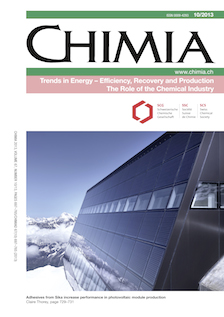Novel Cathode Material for Rechargeable Lithium–Sulfur Batteries
DOI:
https://doi.org/10.2533/chimia.2013.719Keywords:
Cathode, Depolymerization, Lithium–sulfur battery, Redox polymer, Tetrasulfide crosslink, Trithiocyanuric acid coreAbstract
This article describes the synthesis and characterization of a novel crosslinked polymer with tricyanuric acid core bearing tetrasulfide bridges as a novel redox polymerization electrode material for rechargeable lithium–sulfur batteries. The new material was synthesized by reaction of stoichiometric sulfur monochloride amounts with trithiocyanuric acid and the structure of the redox polymer proven by the means of elementary analysis, infrared spectroscopy and Raman spectroscopy. Electrochemical evaluation of the polymer as electroactive cathode component showed cycling stability up to 140 cycles after initial capacity of 650 mAhg–1 with 73% utilization of the theoretical specific capacity (893 mAhg–1) regarding the electroactive tetrasulfide moieties. Cell operation with excess amounts of electrolyte did not accelerate the cell degradation, indicating that the reduced sulfur species such as lower polysulfides (Li2S, Li2S2) and tris lithium salt of trithiocyanuric acid are efficiently immobilized on the cathode side.
Downloads
Published
Issue
Section
License
Copyright (c) 2013 Swiss Chemical Society

This work is licensed under a Creative Commons Attribution-NonCommercial 4.0 International License.







